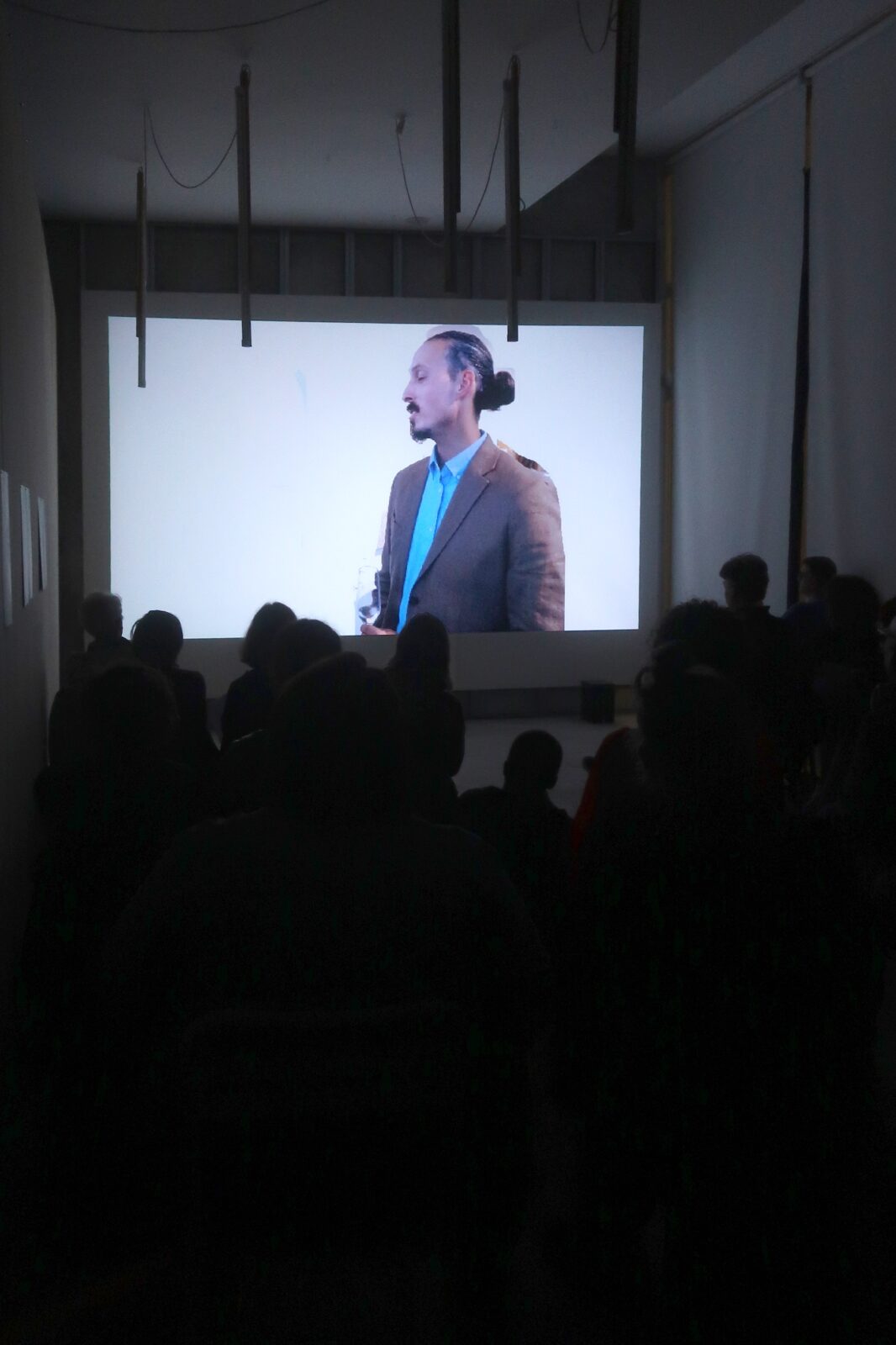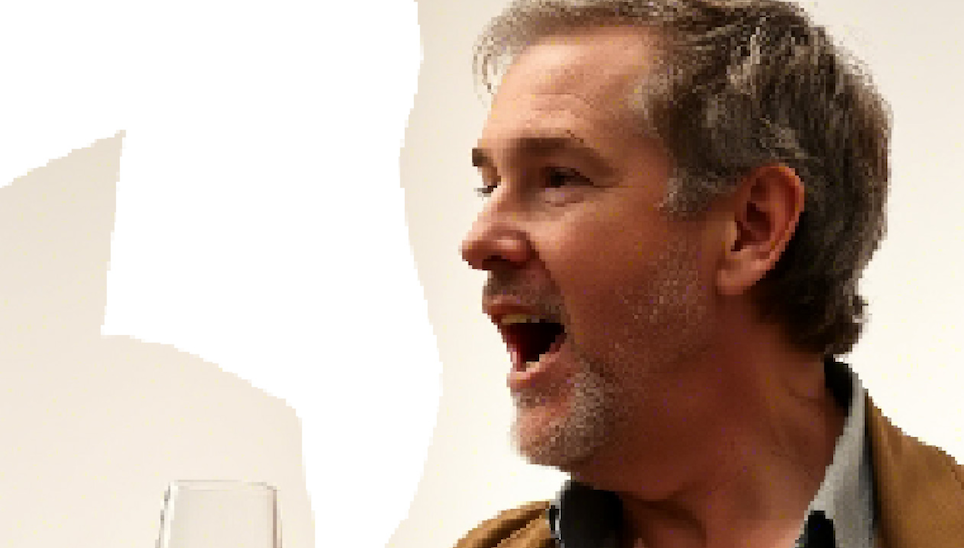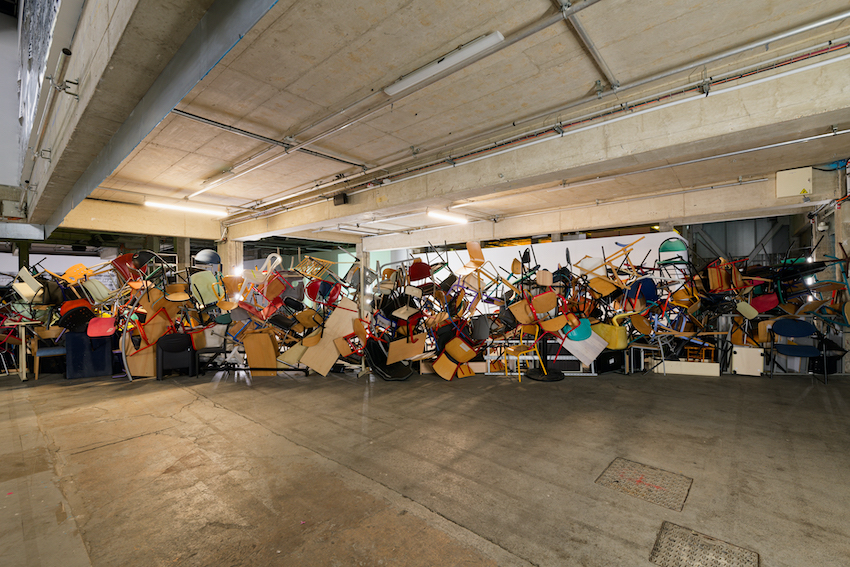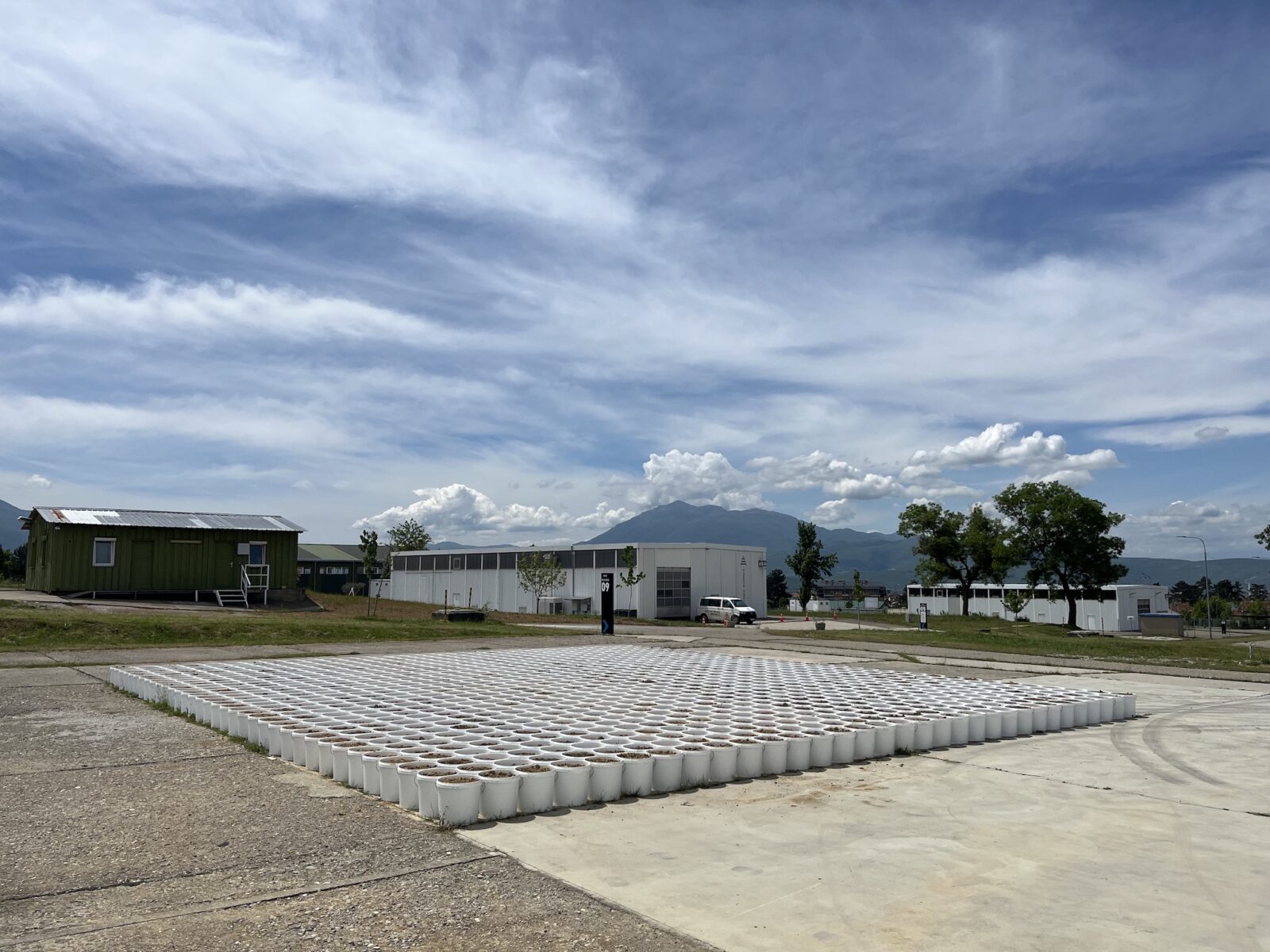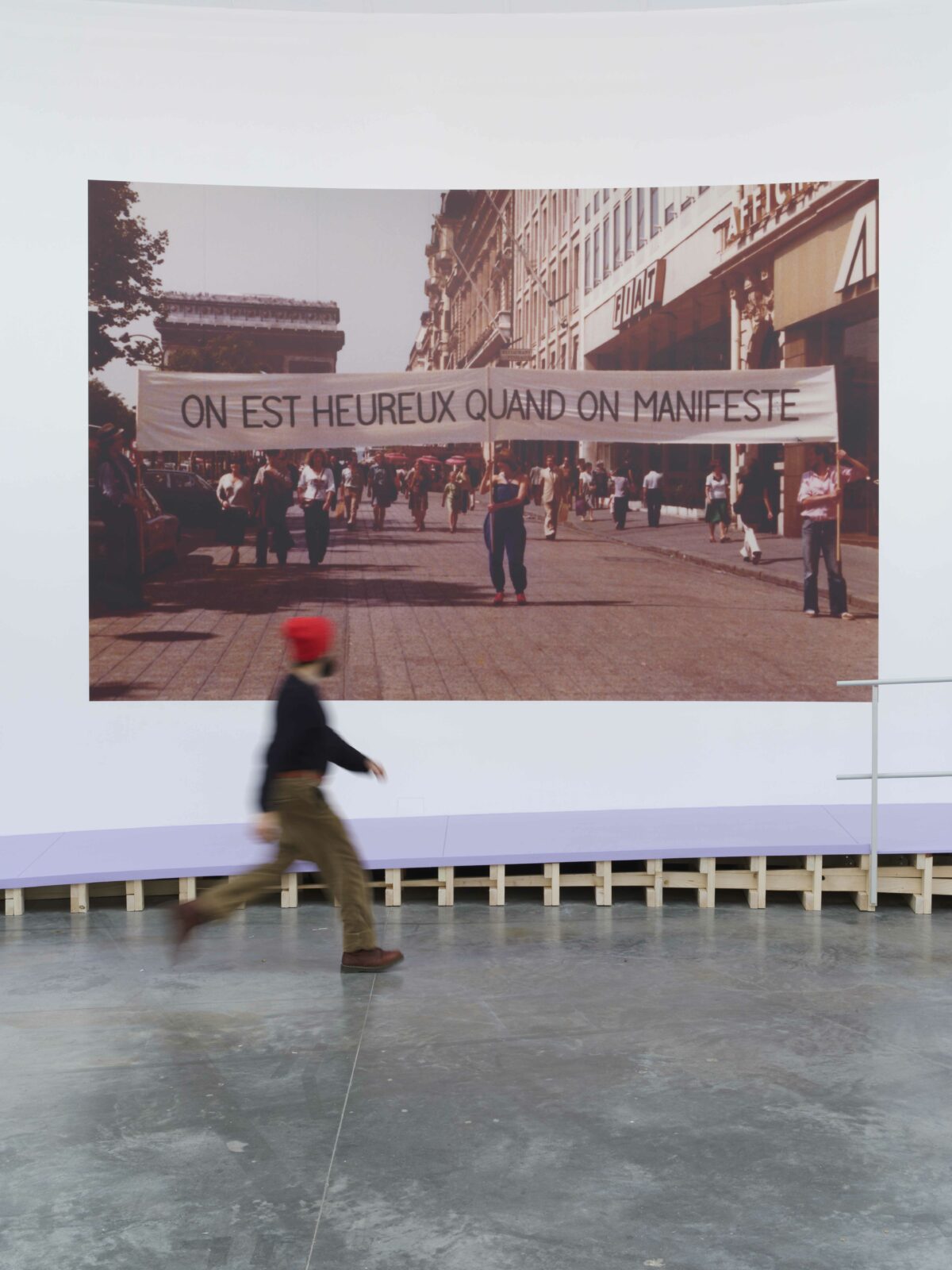05 – 28.06.2025 | part 1
Claude Closky
June 15
film & drawings
Thursday June 5 | Private View episodes 1 & 2
Saturday June 7 | Private View episodes 3 & 4
Thursday June 12 | Private View episodes 5 & 6
Saturday June 14 | Private View episodes 7 & 8
Thursday June 19 | Private View episodes 9 & 10
Saturday June 21 | Private View episodes 11 & 12
Thursday June 26 | Private View episodes 13 & 14
Saturday June 28 | Private View episodes 15 & 16
openings at 9:30 pm in the presence of the artist, screening at 10 pm

Claude Closky
5 juin | solo | 05 – 28 juin 2025 | 1ère partie
Private View est une série composée de 20 épisodes. Il s’agit d’un dialogue, environ 300 personnages et dix mille répliques. Chaque prise de parole est la transcription intégrale d’écritures et/ou de typographies visibles sur une œuvre d’art, essentiellement des peintures, des néons et des textes muraux, qui consistent (de mon point de vue) à donner à lire des phrases, mots, lettres. Ces interlocutions sont enchaînées afin qu’elles se répondent et construisent une discussion, un propos, tout en respectant rigoureusement l’ordre chronologique de la réalisation des œuvres convoquées, de 1955 à 2006 (année où j’ai imaginé ce projet). Le titre “Private View”, qui indique un vernissage, dit aussi que la sélection et l’association des messages cités sont subjectives et créent une fiction.
Ce corpus part d’un constat, celui de l’invasion progressive de l’œuvre d’art par le texte. Du discours essentiellement abstrait et sur lui-même qui domine les années 60, à la critique politique, sociale, économique, culturelle et morale, en passant par les déclarations individuelles et l’expression de soi, le langage dans l’œuvre suit les préoccupations de l’art. Il révèle implicitement les transformations politiques et sociales, l’hégémonie du monde occidental depuis les années de prospérité de l’après-guerre jusqu’au tournant du millénaire. La discussion évolue selon des méandres associatifs, engendrant dérives, décrochements et déplacements du sens. Décollés de leur support, les mots retrouvent leur fonction d’usage, activant par leur assemblage un récit ouvert.
Pour donner un aspect brut et pictural au film, il n’est constitué que de plans fixes. Les personnages sont photographiés lors d’inaugurations d’expositions d’art contemporain. Un seul plan par personnage, visage de profil ou de trois quarts, affiché à l’endroit ou inversé en miroir afin de toujours faire face à l’interlocuteur précédent. Un zoom pixélisé sur le visage est appliqué lorsqu’il reprend la parole plusieurs fois de suite.
Le texte a été édité en 2011, et performé dans une mise en scène d’Yves Lefebvre, à Paris dans l’Auditorium du Louvre le 21 octobre 2011, et à Louvain au STUK Soetezaal le 10 novembre 2012.
La majeure partie du film a été réalisé en 2019 lors d’une résidence à Quartier Éphémère, soutenue par la Fonderie Darling, un centre d’arts visuels à Montréal. Un soutien supplémentaire a été apporté par le Centre culturel canadien de Paris, la Ville de Paris, la Fondation des Artistes, le Couvent des Récollets à Paris et MoCo Montpellier Contemporain. Les dernières prises de son ont été faites à Berlin en 2023.
CC
En regard de Private View est présenté une sélection de dessins au stylo bille qui questionnent avec humour certains lieux communs utiles à la communication.
Claude Closky
June 5 | solo | June 05 – 28, 2025 | part 1
Private View is a series composed of 20 episodes. It is a dialogue involving around 300 characters and ten thousand lines. Each utterance is the complete transcription of writings and/or typography visible on a work of art, essentially paintings, neons, and wall texts, which mainly (in my view) consist of presenting phrases, words, letters to be read. These lines are chained so that they respond to each other and construct a discussion, while strictly respecting the chronological order of the creation of the works involved, from 1955 to 2006 (the year I conceived this project). The title Private View, which refers to an exhibition opening, also suggests that the selection and association of the quoted messages are subjective and form a fiction.
This body of work stems from an observation: the progressive invasion of artworks by text. From the predominantly abstract and self-referential discourse that dominated the 1960s, to political, social, economic, cultural, and moral critique, passing through personal declarations and self-expression, language within the artwork follows the concerns of art. It implicitly reveals the political and social transformations, the hegemony of the Western world from the post-war boom years to the turn of the millennium. The discussion evolves through associative meanders, generating deviations, disconnections, and shifts in meaning. Detached from their support, words regain their common function, activating an open-ended narrative.
To give the film a raw and pictorial quality, it consists only of static shots. The characters are photographs captured at openings of contemporary art exhibitions. Each is presented in a single profile or three-quarter view, oriented upright or mirror-inverted to always face the previous speaker. A pixelated close-up is applied when they speak several times in a row.
The text was published in 2011 and was performed in a staging by Yves Lefebvre, in Paris at the Louvre Auditorium on October 21, 2011, and in Leuven at STUK Soetezaal on November 10, 2012.
Most of the film was created in 2019 during a residency at Quartier Éphémère, supported by the Fonderie Darling, a visual arts center in Montreal. Additional support came from the Canadian Cultural Centre in Paris, the City of Paris, the Fondation des Artistes, the Couvent des Récollets in Paris, and MoCo Montpellier Contemporain. The final sound recordings were made in Berlin in 2023.
CC
Alongside Private View, a selection of ballpoint pen drawings is also presented, that humorously challenge some of the commonplaces of communication.
FR_Claude Closky_5 juin | PDF
EN_Claude Closky_June 5 | PDF
FR_Claude Closky_Private View__épisodes 1 & 2__extrait | PDF
FR_Claude Closky_Private View__épisodes 3 & 4__extrait | PDF
FR_Claude Closky_Private View__épisodes 5 & 6__extrait | PDF
EN_Claude Closky_Private View__episodes 1 & 2__extract | PDF
EN_Claude Closky_Private View__episodes 3 & 4__extract | PDF
EN_Claude Closky_Private View__episodes 5 & 6__extract | PDF
FR_CP_Claude Closky_5 juin | PDF
EN_Press_Claude Closky_June 5 | PDF
bio_Claude Closky | PDF
FR_15 mois_Salle Principale | PDF
